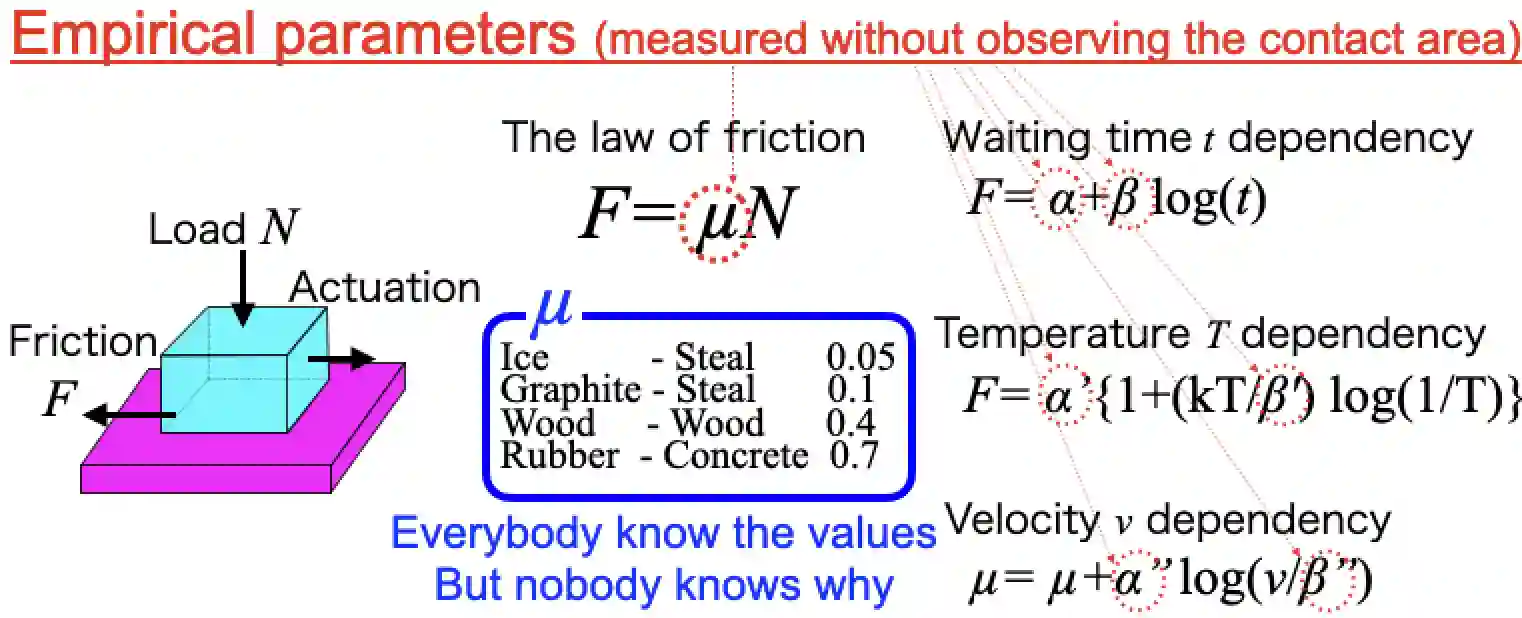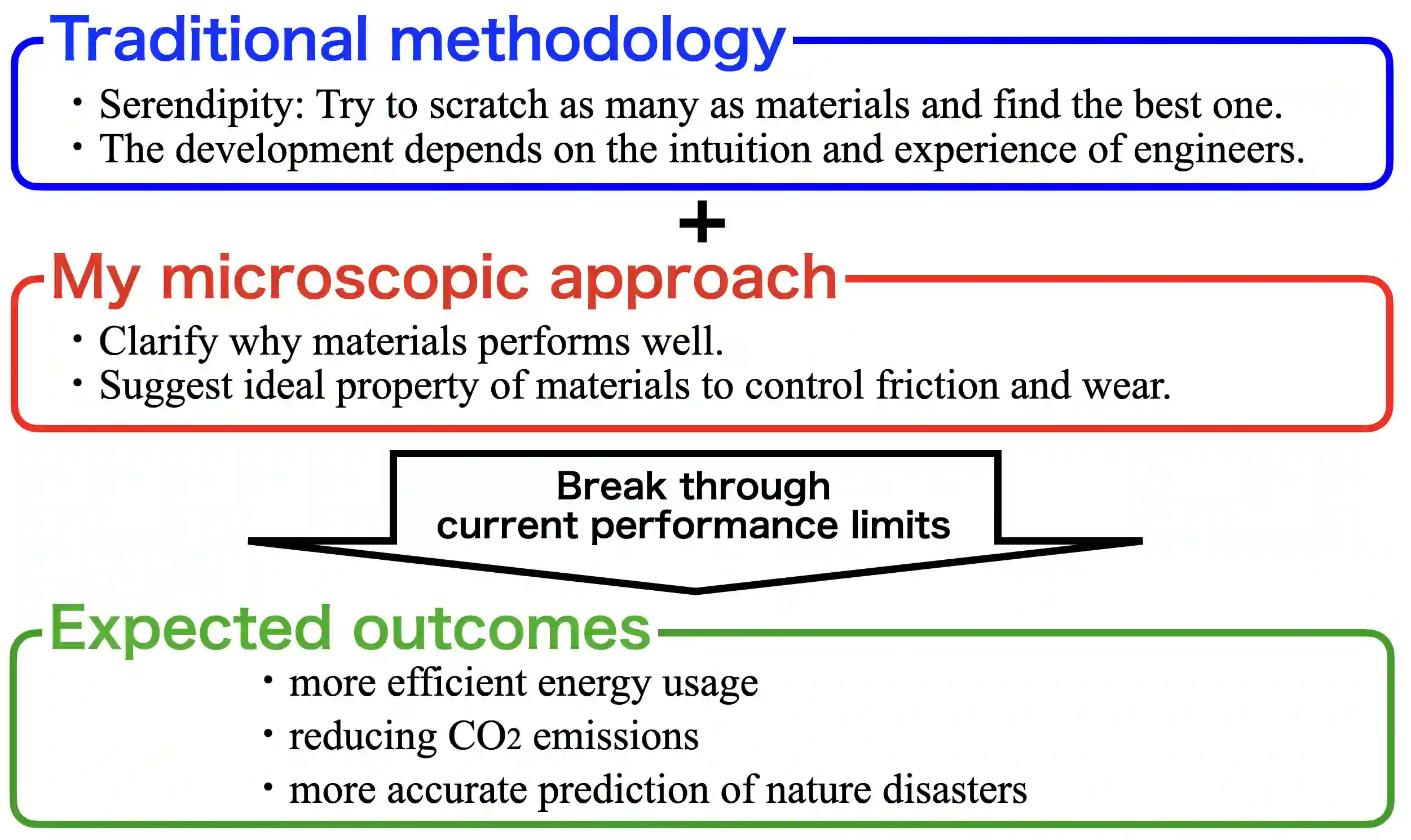Our originality is MEMS. We use microfabrication techniques to integrate actuators and sensors into TEM, allowing for observing samples and phenomena that were previously unobservable.
In other words, we have combined MEMS with TEM to enable novel in-situ observations.

The mission of our research is to clarify "why friction occurs", "why wear occurs" and "why adhesion occurs" from a microscopic viewpoint.

Our vision is that our microscopic approach will clarify which phenomena dominately affect the empirical parameters exhibited by friction laws.
There are many empirical parameters for various dependencies of frictional force, such as load dependence, contact waiting time dependence, and velocity dependence.
Our experimental system, which allows observation of the actual contact area, will provide novel insights into these parameters from a microscopic approach.

The ultimate goal of my research is to provide the guideline of materials for advancing tribology suggesting how to precisely controll friction, adhesion and wear as desired.
That's related technologies such as improving the energy conversion efficiency, reducing environmental pollution, and more accurately predicting of earthquakes and landslides.
